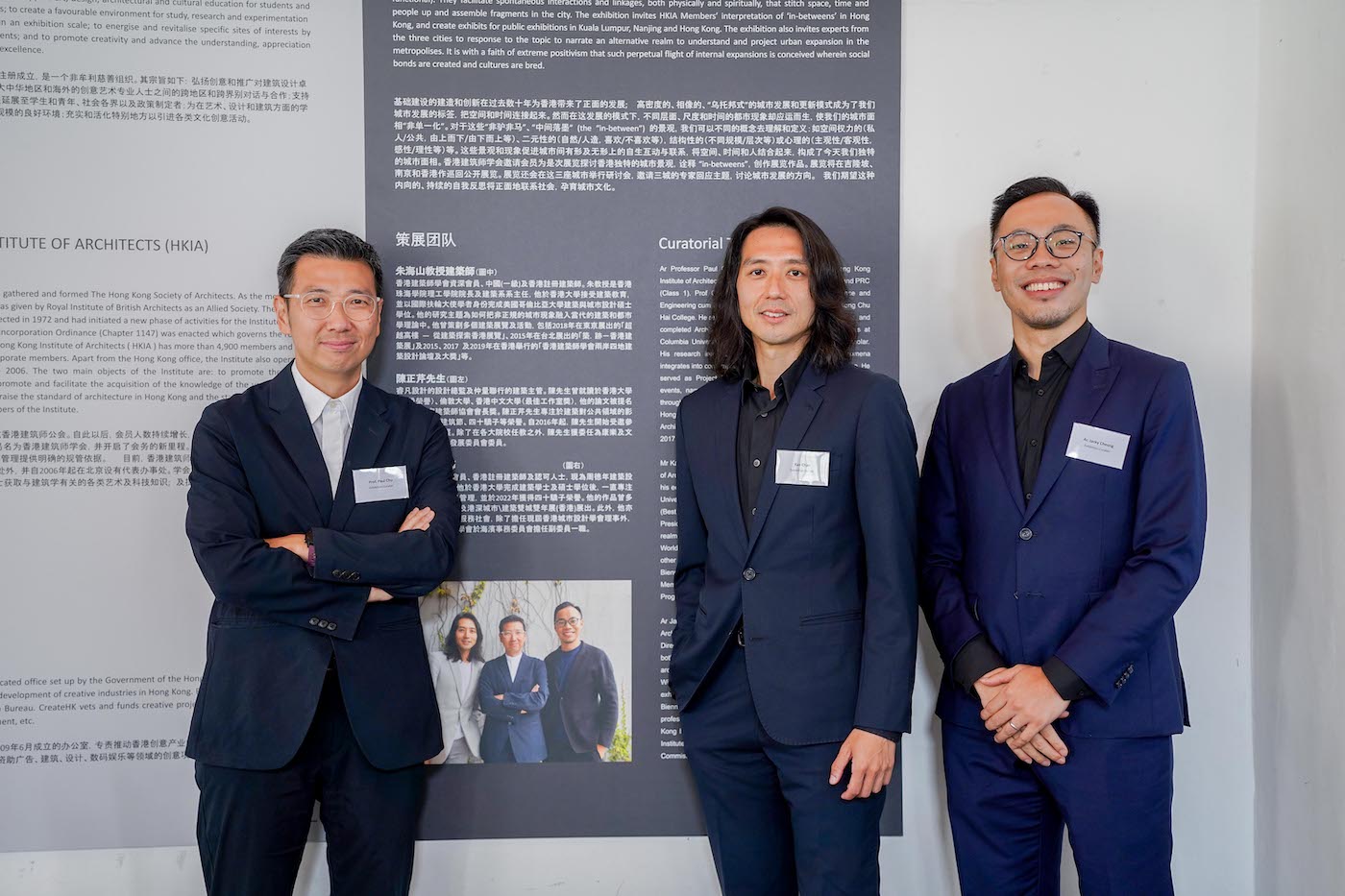
Exploring the world that lies in-between
Hong Kong is often described in terms of its contrasts – old and new, East and West, urban density and nature. But it’s what lies between that is the inspiration for a roving exhibition curated by some of the city’s brightest young architects and designers, now on display in Kuala Lumpur.
Sixteen immersive exhibits have been brought together for the ““Harmony in Diversity-Connecting the Metropolis by In-Between” exhibition by the talented trio of Professor Paul Chu, of Hong Kong Chu Hai College, Kan Chan, of Aravia Design and Jacky Cheung, of Thomas Chow Architects, (photographed from left above).
So, what does “in-between” in this context really mean? According to Cheung, it describes a position “between two poles or categories”. “It can be the pronoun of an open space in a dense urban fabric, or provisional and informal artefacts constructed in the city.” Professor Chu sees it more in terms of time, representing a “state of continuous changes”. “The exhibits give a pause to these changes and reveal the urbanscape interwoven by different dimensions.”
Let’s have a closer look at a few of the exhibits.
Digital Common(s): The Role of Metaverse Tools for Citizen Design Science in Hong Kong
By Provides Ng, Yuechun Li, Shutong Zhu, Bingge Xu, Kitman Yip and Jeroen van Ameijde
Digital Commons is a design research project that brings a combination of metaverse technologies, such as community gamification, to public housing residents as design communication tools – and which ultimately seeks to create a more inclusive “bottom-up” approach to urban design. Through a series of workshops that invite citizens, designers, and the public to become co-researchers, the project aims to share data, information, and technology to support collective decision-making, and bridge the “in-between” designers and users.
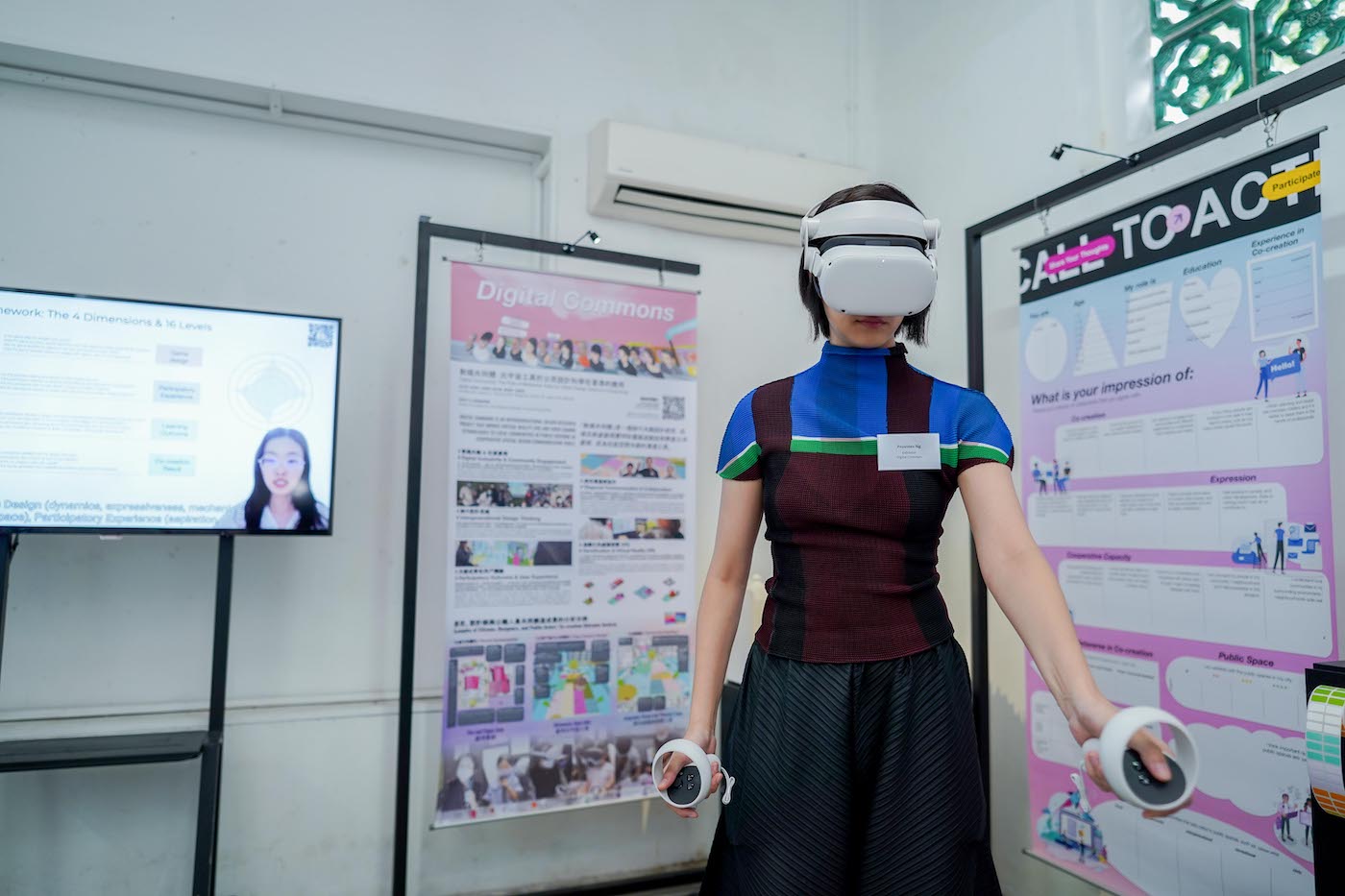
Project Oikwan
By Oi Kwan Barbers, In-between Architects, Cheung Chau Wave
Oi Kwan Barbers is a 60-year-old traditional Cantonese alleyway barbershop in Wan Chai, one of the last handful of its kind remaining. Started by the late Master Lau, son Mark maintains the shop in its original form. The exhibit uses the barbershop as its ground zero, with artists and designers invited to create artwork in response to it. It also digitally archives the shop so that one day it may still exist in virtual reality even if lost to our physical one. Together, the designers tell the story of a place, a craft, and a family – through exhibitions, artist talks, performances, workshops and books.
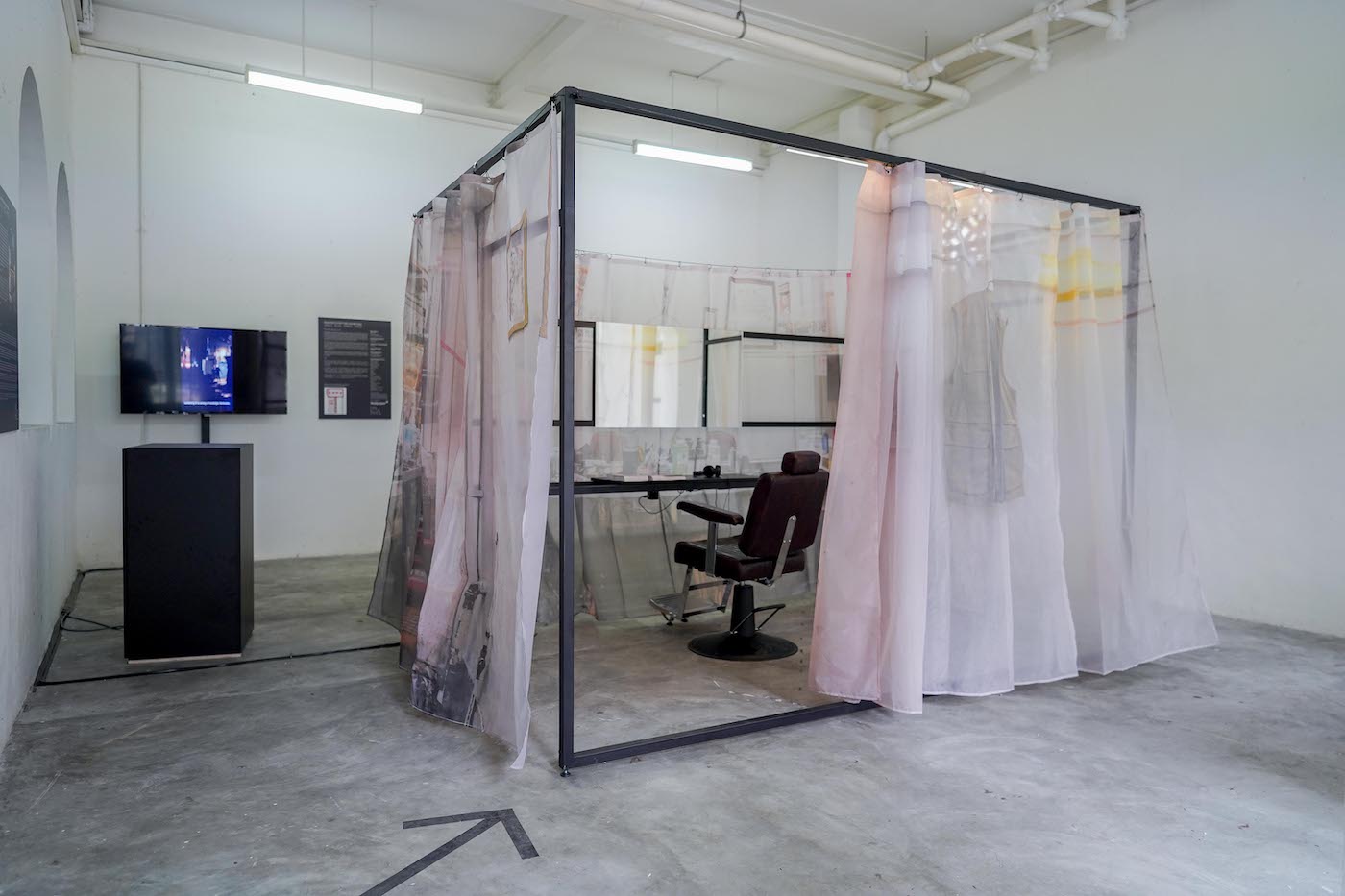
Metapolis Cube
By Marco Siu, Brian Lee, Andy Kong
Metapolis Cube explores the impact of social media on public spaces, focusing on the “in-between” space between virtual and physical experience. It looks at a particular space in Hong Kong – the recently viral “Instagram pier” at the informal Public Cargo Working Area and the formal Kennedy Town Promenade. Drawing from internet big data, the exhibit constructs a forensic mapping of social media’s impression of the space, combining both the physical “cloud” model of images and the 3D LED display on the flow and density of data, exploring the interconnection between the physical, mental and the virtual.
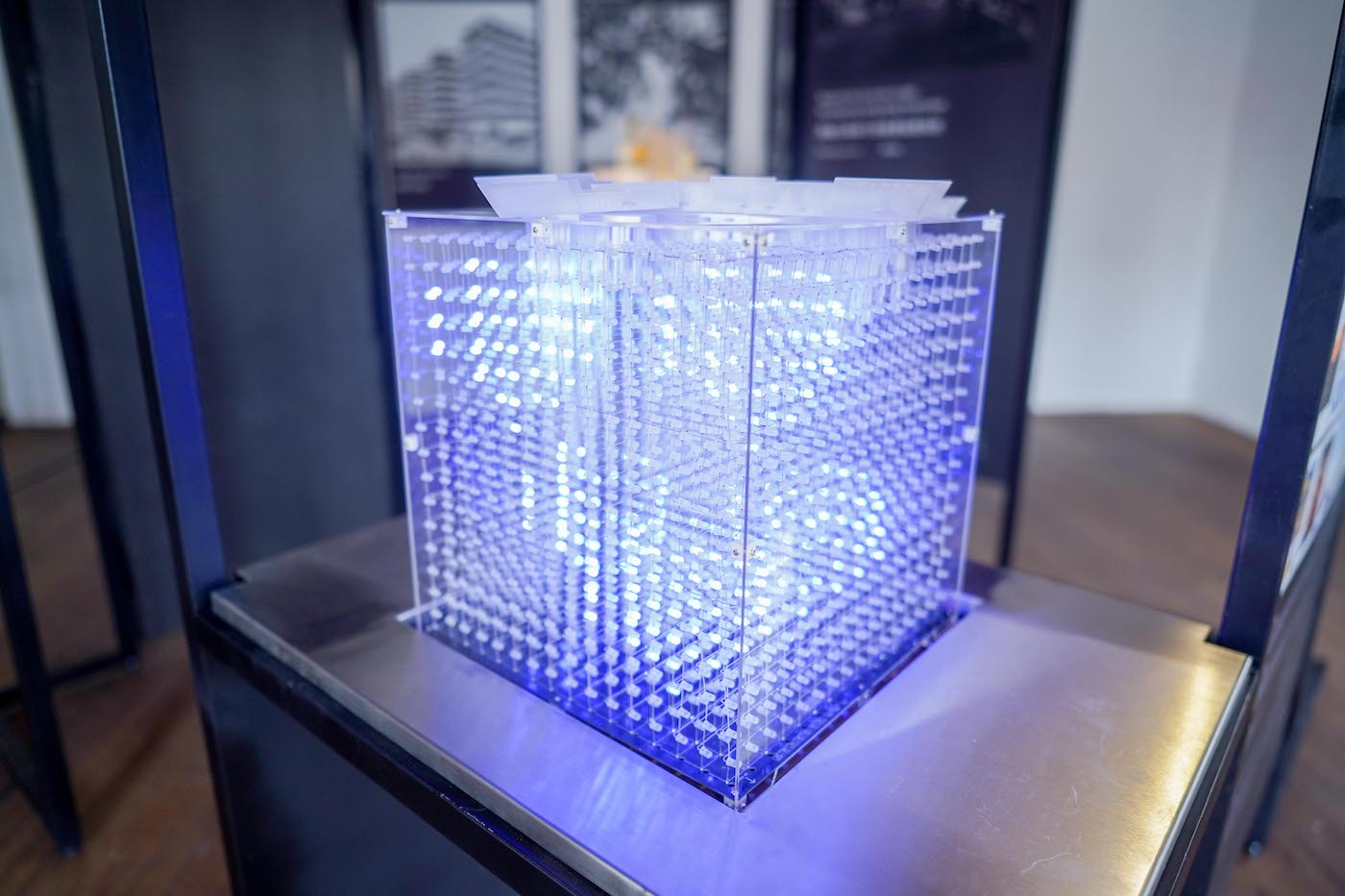
Architectural Symbiosis Between Times, Places and People
Architectural Services Department, HK
Architecture plays an important role in mediating between different urban fabrics and bringing the community together. This exhibit displays six projects by Hong Kong’s Architectural Services Department, ranging from heritage, recreational to educational buildings which reflect a human-centric and nature-balanced design concept., presented under three categories: Between times – juxtapose old and new, Between places – parallel with nature and Between people – Connect Programmes. They bridge different elements to bring harmony in space, form and function.
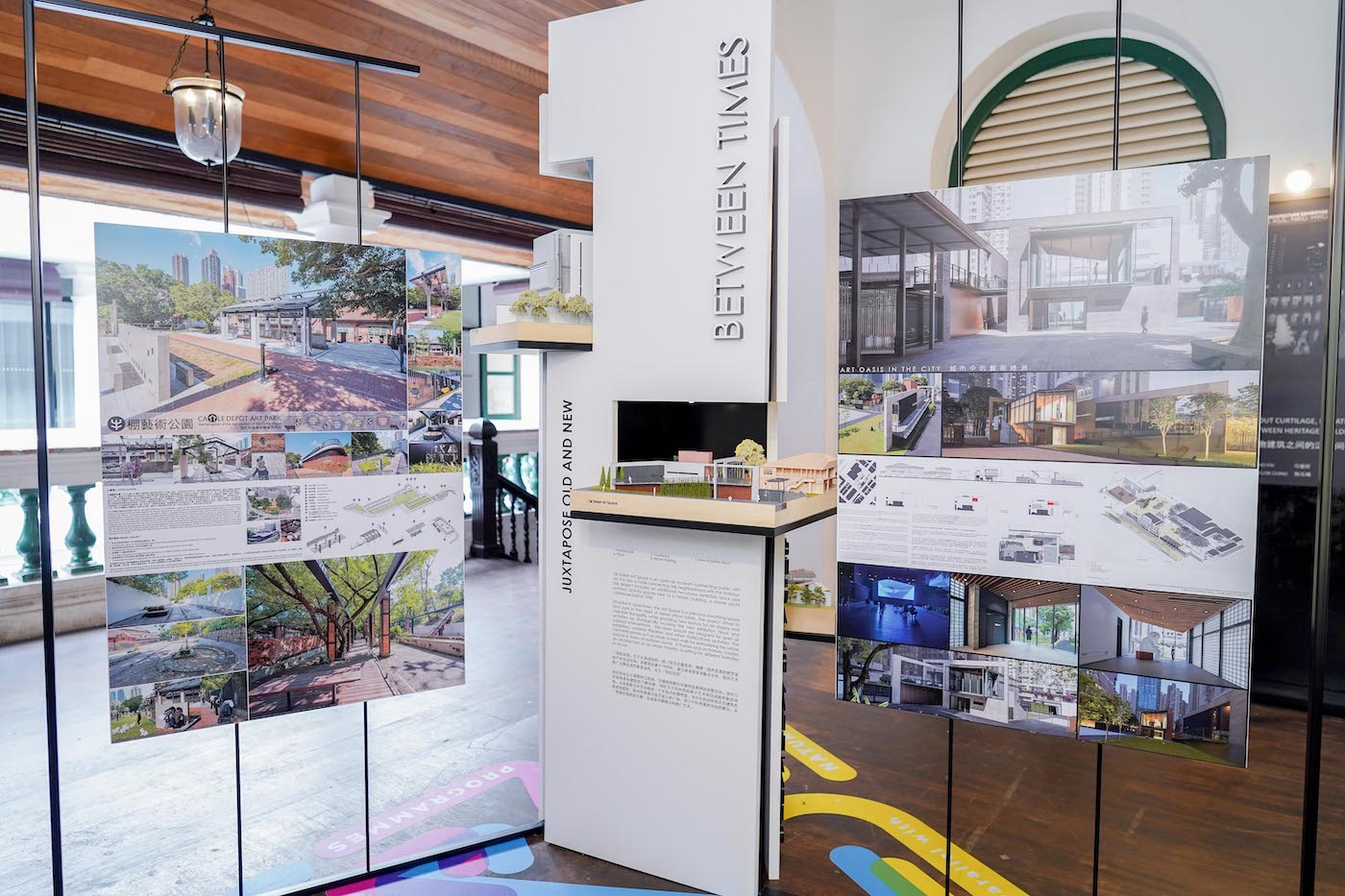
Initial reports indicate the exhibition has received an overwhelmingly positive response from visitors since opening on July 22. Hong Kong Institute of Architects President Benny Chan praised the exhibition showcasing Hong Kong architects from different generations. “It not only provides a platform for deepening industry exchange, but also a golden opportunity to show to different regions the uniqueness of Hong Kong architecture in the changing times.”
Following the Kuala Lumpur event, which finishes on August 7, the exhibition will move to Nanjing, China, in October and November for the second stop, before returning to Hong Kong in the first quarter of 2024.
It is the second of the HKIA’s Roving Architecture Exhibitions, otherwise known as RAX, organised by HKIA’s Biennale Foundation, with HKIA as partner and Create Hong Kong as lead sponsor. The first exhibition – “Transformative Hong Kong” – involves 11 exhibits on display at the Venice Biennale from May to November.